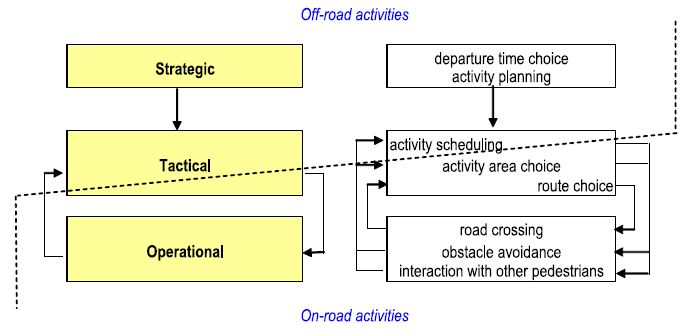
This paper concerns a review and critical assessment of the existing research on pedestrian behaviour in urban areas, focusing on two separate yet complementary aspects: route choice and crossing behaviour. First, an exhaustive review of the existing route choice models for pedestrians is presented. It is shown that the existing models are mainly more stochastic and more macroscopic than required and seldom incorporate the interactions between pedestrians and traffic. Second, the existing models on pedestrians crossing behaviour are presented and assessed. It is shown that, although their approach is usually detailed, deterministic and traffic-oriented, they are mainly devoted to a local level behaviour and focus on only one type of all the potential determinants. Most importantly, these two complementary and possibly interdependent aspects of pedestrian behaviour are always examined separately. The results of this review reveal a lack of an overall and detailed consideration of pedestrian behaviour along an entire trip in urban areas. Moreover, the need for an integrated approach based on flexibility, disaggregation and more determinism is identified. Accordingly, a set of modelling techniques are discussed as a general framework for further research in the field.
| ID | pj38 |
| Manuscript | |
| DOI | |
| Tags | pedestrians, traffic management |







